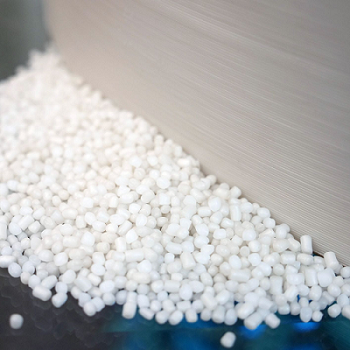One of the world’s top biopolymer producers, Brazilian petrochemical company Braskem (NYSE: BAK) has an indirect wholly owned subsidiary, Braskem America, that’s the leading producer in the US of the thermoplastic polymer polypropylene (PP). The company has previously shown interest in 3D printed aerospace applications, but is now turning its sights to 3D printed prosthetic devices with the launch of its own e-NABLE chapter. We’ve often discussed the heartwarming e-NABLE volunteer community, which has been matching makers with children and adults in need of low-cost 3D printed prosthetic upper limb devices for nearly nine years now. Braskem’s newly established chapter successfully completed the e-NABLE prosthetic device certification process, which means that Braskem’s Pittsburgh Innovation & Technology Center can commence the philanthropic creation of 3D printed, PP-based prosthetic hands.
“On behalf of the entire Braskem team, we are incredibly honored to be partnering with e-NABLE around launching the new Braskem e-NABLE chapter with our world class innovation and technology team in Pittsburgh. The visionary founders at e-NABLE have created a global network of digital humanitarians that are leveraging the latest in material science and technologies to tackle some of the most pressing medical needs for prosthetic devices, particularly in underserved communities that often lack adequate resources and access to proper medical care,” said Jason Vagnozzi, Braskem Additive Manufacturing Leader, North America. “The Braskem team can now bring its polymer science expertise in polypropylene, the primary input to the 3D printed PP Phoenix V3 prosthetic hand, to the benefit of well deserving children and adults in Pennsylvania or anywhere around the globe. We couldn’t be more excited to kick-off our new e-NABLE Chapter and to start helping change lives for the better.”

Braskem 3D Printed Polypropylene Phoenix V3 Prosthetic Hand. e-NABLE Phoenix Hand v3 designers: Jason Bryant, John Diamond, Scott Darrow, Andreas Bastian, Team Unlimited, e-NABLE France, and Jeremy Simon.
Polypropylene is an ideal material for 3D printing the Phoenix V3 prosthetic hand, which is one of e-NABLE’s most common devices. PP is resistant to household chemicals and cleaners, such as acetone and other nail polish removers, and more lightweight than other filaments, which makes the prosthetic easier to hold all day. It’s also a very durable material, so while 3D printed prosthetic hands made with other filaments can break or crack easily, especially when the temperature is low, the device can hold up well under daily wear and tear when made out of PP. Additionally, Braskem’s polypropylene filament can be safely heated and custom-formed, so that each prosthetic device user can have the best fit.
Because of its vast experience producing PP and 3D printing it, Braskem America will be able to support the e-NABLE community in a big way, putting its manufacturing and materials expertise to work 3D printing PP-based e-NABLE Phoenix V3 prosthetic hands, which will then be provided free of charge to recipients in need not only in Pennsylvania but also around the globe.
“We are excited that Braskem has joined the global e-NABLE community as an official chapter! Indeed, Braskem’s expertise in materials (specifically polypropylene) and 3D printing will bring benefit to the entire community of some 8,000 volunteers and 177 chapters in 51 countries,” said Bob Rieger, e-NABLE Chapter Coordinator. “We look forward to learning more about these materials, and having our volunteers use and maximize their application in helping underserved people and communities with upper body 3D printed prostheses.”
Braskem initially chose to be certified to produce only e-NABLE’s Phoenix V3 prosthetic hand, though it plans to work towards other certifications in the future. This way, the company’s newly launched e-NABLE chapter can print more PP-based prosthetic upper limb devices and grow the number of people it’s able to help.
(Source/Images: Braskem)
Subscribe to Our Email Newsletter
Stay up-to-date on all the latest news from the 3D printing industry and receive information and offers from third party vendors.
You May Also Like
IperionX Inks 10-Year Deal with Wisconsin Manufacturer for 80 Metric Tons of Titanium Per Year
IperionX, the Charlotte-based supplier of sustainable titanium powders used for additive manufacturing (AM) and metal injection molding (MIM), has signed a ten-year deal with United Stars, a group of industrial...
Gastronology Launches Industrial Production of 3D Printed Food for Dysphagia Patients
Food 3D printing has, in many ways, been an additive manufacturing (AM) segment looking for the right business case. While some applications are beautiful and others may or may not...
Lockheed Martin Leads $3M Investment in Q5D’s Electronics 3D Printing System
Q5D, an original equipment manufacturer (OEM) of robotic arm, hybrid additive manufacturing (AM) systems used for wire harness production, has closed a $3 million investment round. The investment arm of...
3D Printing News Briefs, April 6, 2024: Depowdering, Cybertruck Door Handles, & More
In today’s 3D Printing News Briefs, ioTech’s digital manufacturing CLAD technology is opening up opportunities for microelectronics and additive manufacturing. Hexagon and Raytheon Technologies commercially released the Simufact Additive Process...

































